Ashok K. Goel
Georgia Institute of Technology
Enhanced Question-Answering for Skill-based learning using Knowledge-based AI and Generative AI
Apr 10, 2025Abstract:Supporting learners' understanding of taught skills in online settings is a longstanding challenge. While exercises and chat-based agents can evaluate understanding in limited contexts, this challenge is magnified when learners seek explanations that delve into procedural knowledge (how things are done) and reasoning (why things happen). We hypothesize that an intelligent agent's ability to understand and explain learners' questions about skills can be significantly enhanced using the TMK (Task-Method-Knowledge) model, a Knowledge-based AI framework. We introduce Ivy, an intelligent agent that leverages an LLM and iterative refinement techniques to generate explanations that embody teleological, causal, and compositional principles. Our initial evaluation demonstrates that this approach goes beyond the typical shallow responses produced by an agent with access to unstructured text, thereby substantially improving the depth and relevance of feedback. This can potentially ensure learners develop a comprehensive understanding of skills crucial for effective problem-solving in online environments.
Integrating Cognitive AI with Generative Models for Enhanced Question Answering in Skill-based Learning
Jul 28, 2024Abstract:In online learning, the ability to provide quick and accurate feedback to learners is crucial. In skill-based learning, learners need to understand the underlying concepts and mechanisms of a skill to be able to apply it effectively. While videos are a common tool in online learning, they cannot comprehend or assess the skills being taught. Additionally, while Generative AI methods are effective in searching and retrieving answers from a text corpus, it remains unclear whether these methods exhibit any true understanding. This limits their ability to provide explanations of skills or help with problem-solving. This paper proposes a novel approach that merges Cognitive AI and Generative AI to address these challenges. We employ a structured knowledge representation, the TMK (Task-Method-Knowledge) model, to encode skills taught in an online Knowledge-based AI course. Leveraging techniques such as Large Language Models, Chain-of-Thought, and Iterative Refinement, we outline a framework for generating reasoned explanations in response to learners' questions about skills.
Navigating AI Fallibility: Examining People's Reactions and Perceptions of AI after Encountering Personality Misrepresentations
May 25, 2024Abstract:Many hyper-personalized AI systems profile people's characteristics (e.g., personality traits) to provide personalized recommendations. These systems are increasingly used to facilitate interactions among people, such as providing teammate recommendations. Despite improved accuracy, such systems are not immune to errors when making inferences about people's most personal traits. These errors manifested as AI misrepresentations. However, the repercussions of such AI misrepresentations are unclear, especially on people's reactions and perceptions of the AI. We present two studies to examine how people react and perceive the AI after encountering personality misrepresentations in AI-facilitated team matching in a higher education context. Through semi-structured interviews (n=20) and a survey experiment (n=198), we pinpoint how people's existing and newly acquired AI knowledge could shape their perceptions and reactions of the AI after encountering AI misrepresentations. Specifically, we identified three rationales that people adopted through knowledge acquired from AI (mis)representations: AI works like a machine, human, and/or magic. These rationales are highly connected to people's reactions of over-trusting, rationalizing, and forgiving of AI misrepresentations. Finally, we found that people's existing AI knowledge, i.e., AI literacy, could moderate people's changes in their trust in AI after encountering AI misrepresentations, but not changes in people's social perceptions of AI. We discuss the role of people's AI knowledge when facing AI fallibility and implications for designing responsible mitigation and repair strategies.
Jill Watson: A Virtual Teaching Assistant powered by ChatGPT
May 17, 2024

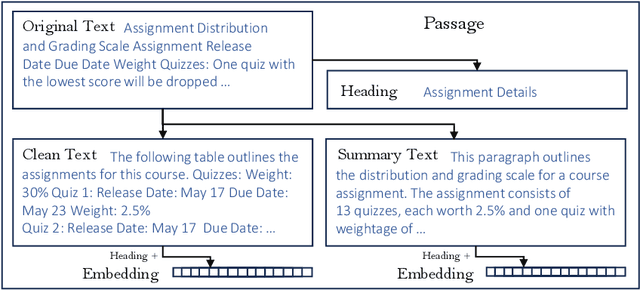

Abstract:Conversational AI agents often require extensive datasets for training that are not publicly released, are limited to social chit-chat or handling a specific domain, and may not be easily extended to accommodate the latest advances in AI technologies. This paper introduces Jill Watson, a conversational Virtual Teaching Assistant (VTA) leveraging the capabilities of ChatGPT. Jill Watson based on ChatGPT requires no prior training and uses a modular design to allow the integration of new APIs using a skill-based architecture inspired by XiaoIce. Jill Watson is also well-suited for intelligent textbooks as it can process and converse using multiple large documents. We exclusively utilize publicly available resources for reproducibility and extensibility. Comparative analysis shows that our system outperforms the legacy knowledge-based Jill Watson as well as the OpenAI Assistants service. We employ many safety measures that reduce instances of hallucinations and toxicity. The paper also includes real-world examples from a classroom setting that demonstrate different features of Jill Watson and its effectiveness.
Mutual Theory of Mind for Human-AI Communication
Oct 07, 2022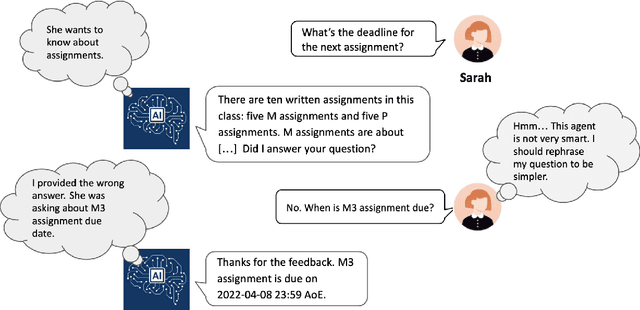

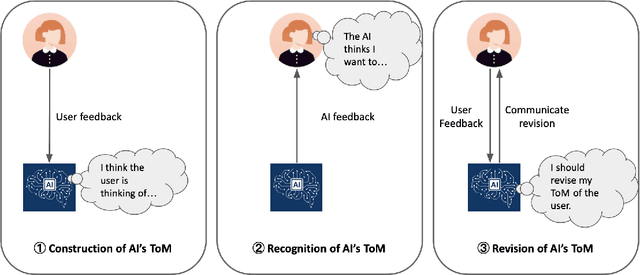
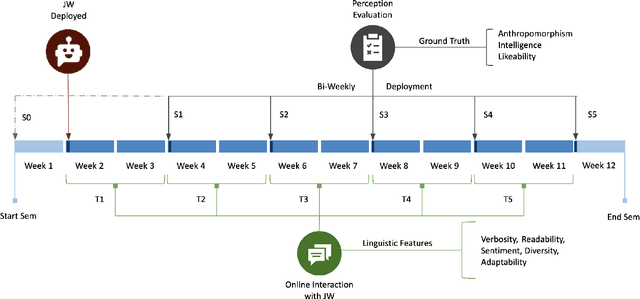
Abstract:From navigation systems to smart assistants, we communicate with various AI on a daily basis. At the core of such human-AI communication, we convey our understanding of the AI's capability to the AI through utterances with different complexities, and the AI conveys its understanding of our needs and goals to us through system outputs. However, this communication process is prone to failures for two reasons: the AI might have the wrong understanding of the user and the user might have the wrong understanding of the AI. To enhance mutual understanding in human-AI communication, we posit the Mutual Theory of Mind (MToM) framework, inspired by our basic human capability of "Theory of Mind." In this paper, we discuss the motivation of the MToM framework and its three key components that continuously shape the mutual understanding during three stages of human-AI communication. We then describe a case study inspired by the MToM framework to demonstrate the power of MToM framework to guide the design and understanding of human-AI communication.
Understanding Self-Directed Learning in an Online Laboratory
Jun 06, 2022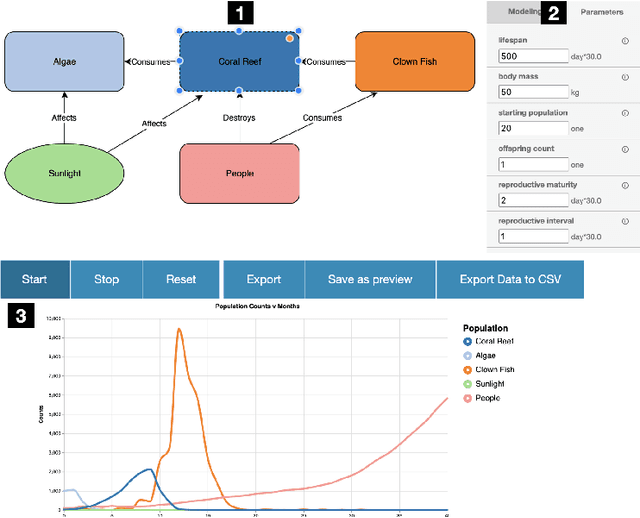



Abstract:We described a study on the use of an online laboratory for self-directed learning by constructing and simulating conceptual models of ecological systems. In this study, we could observe only the modeling behaviors and outcomes; the learning goals and outcomes were unknown. We used machine learning techniques to analyze the modeling behaviors of 315 learners and 822 conceptual models they generated. We derive three main conclusions from the results. First, learners manifest three types of modeling behaviors: observation (simulation focused), construction (construction focused), and full exploration (model construction, evaluation and revision). Second, while observation was the most common behavior among all learners, construction without evaluation was more common for less engaged learners and full exploration occurred mostly for more engaged learners. Third, learners who explored the full cycle of model construction, evaluation and revision generated models of higher quality. These modeling behaviors provide insights into self-directed learning at large.
 Add to Chrome
Add to Chrome Add to Firefox
Add to Firefox Add to Edge
Add to Edge